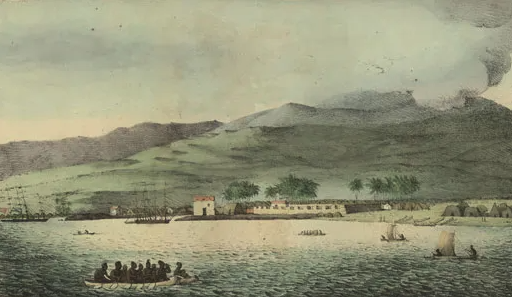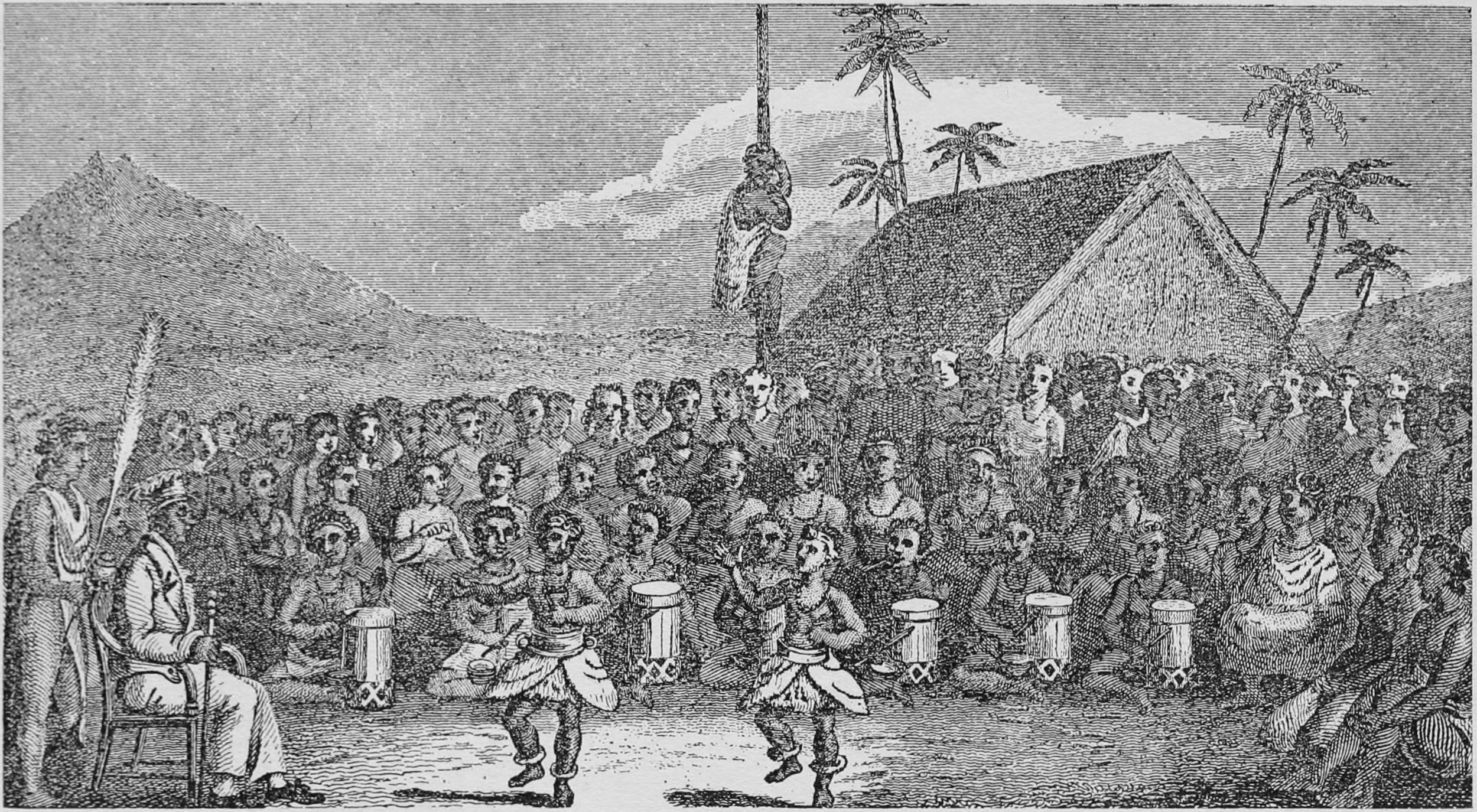
Honolulu Fort
Honolulu Fort, located on the harbor of the area known by Hawaiians as Kou, was the earliest Western-style fort constructed in the islands. It was also the site of a pivotal moment in the turbulent transition between KānakaʻŌiwi and Western ways of governance and religion: the abduction and rescue of Kamehameha III’s intimate same-sex friend and co-ruler of Oʻahu, Kaomi. In the early 1800s, Kamehameha I granted permission for Russian traders who had come to the island to build a storehouse. When he found out they were actually building a military fort, he had the governor of Oʻahu remove the foreigners and expand the structure. By 1830, there were forty guns mounted on the parapets, leading to the nicknames Kekuanohu, which literally means“the back of the scorpion fish,” and Kepapu, or “the gun wall.”
This was a tumultuous period in Hawaiian history. When Kaʻahumanu, the kahunanui or regent of the kingdom, died unexpectedly in 1832, the eighteen-year-old Kamehameha III began to rebel against the Christian laws and edicts Kaʻahumanu had established under instruction by Protestant missionaries. Kamehameha III’s main political supporter was Kaomi Moe, an intelligent and highly educated individual known for both his humor and healing skills. He was also the son of a Tahitian father and Hawaiian mother. Kamehameha III and Kaomi had been living together for several years, and in time became aikāne, or intimate friends of the same sex—a relationship that was well known and publicly acknowledged even by the missionaries. Kamehameha III elevated Kaomi to the title of “mōʻi kui, au-puni kuʻi,”or joint ruler, and gave him the right to distribute land, clothing, and money and draw upon the kingdomʻs budget. Historian Adam Keawe Manalo-Camp notes that ku'i in Hawaiian is a very strong word that implies a union or marriage.
Early in March 1833, a crier was sent through the streets of Honolulu to proclaim the abrogation of all laws except theft and murder. Soon hula and mele were being performed again, rum andʻawa were freely made and distributed, gambling was permitted, and people were free to havesex with whomever and however they pleased, sometimes in groups. Hawaiians from all over theislands flocked to Oʻahu, but the missionary establishment and Christian aliʻi were horrified. The “time of Kaomi” didn’t last long. According to a detailed account written by Hawaiianhistorian S.M. Kamakau in Ruling Chiefs of Hawaiʻi, some of the Christian chiefs hatched a plot to assassinate Kaomi, and sent an aliʻi named Kaikioʻewa to his house in what is now downtown Honolulu. Despite the fact that Kamehameha III had surrounded the house with guards, and proclaimed that no one was to enter the compound at pain of death, Kaomi allowed himself to be bound with ropes and dragged to Honolulu Fort. There Kaikioʻewa was about to have him executed when according to Kamakau:
At this moment the king hurried in, dressed in the scant clothing he was wearing when a guardhad run to inform him that, "Kaomi is being killed by Kaikioʻewa." The king himself untied Kaomi's bonds. Kaikioʻewa sprang forward and grappled with the king, over and under they fought until the king held Kaikioʻewa fast. Then words poured from Kaikio’ewa's mouth declaring, "You are not the ruler over the kingdom if you keep on indulging yourself in evil ways!" but the king did not answer him. Kaomi was released and went back with the king to Kahaleuluhe, and the king's place was made tabu.
The fort remained on the harbor, at what is now the intersection of Queen and Fort Streets, and was the administrative center of the kingdom as well as the site of brief conflicts with the English and French navies.
In 1857, with the harbor full of whaling and trading vessels, it was no longer needed for defense and was torn down. Many of its coral block were used to extend the shoreline out into the harbor and to pave city sidewalks.






